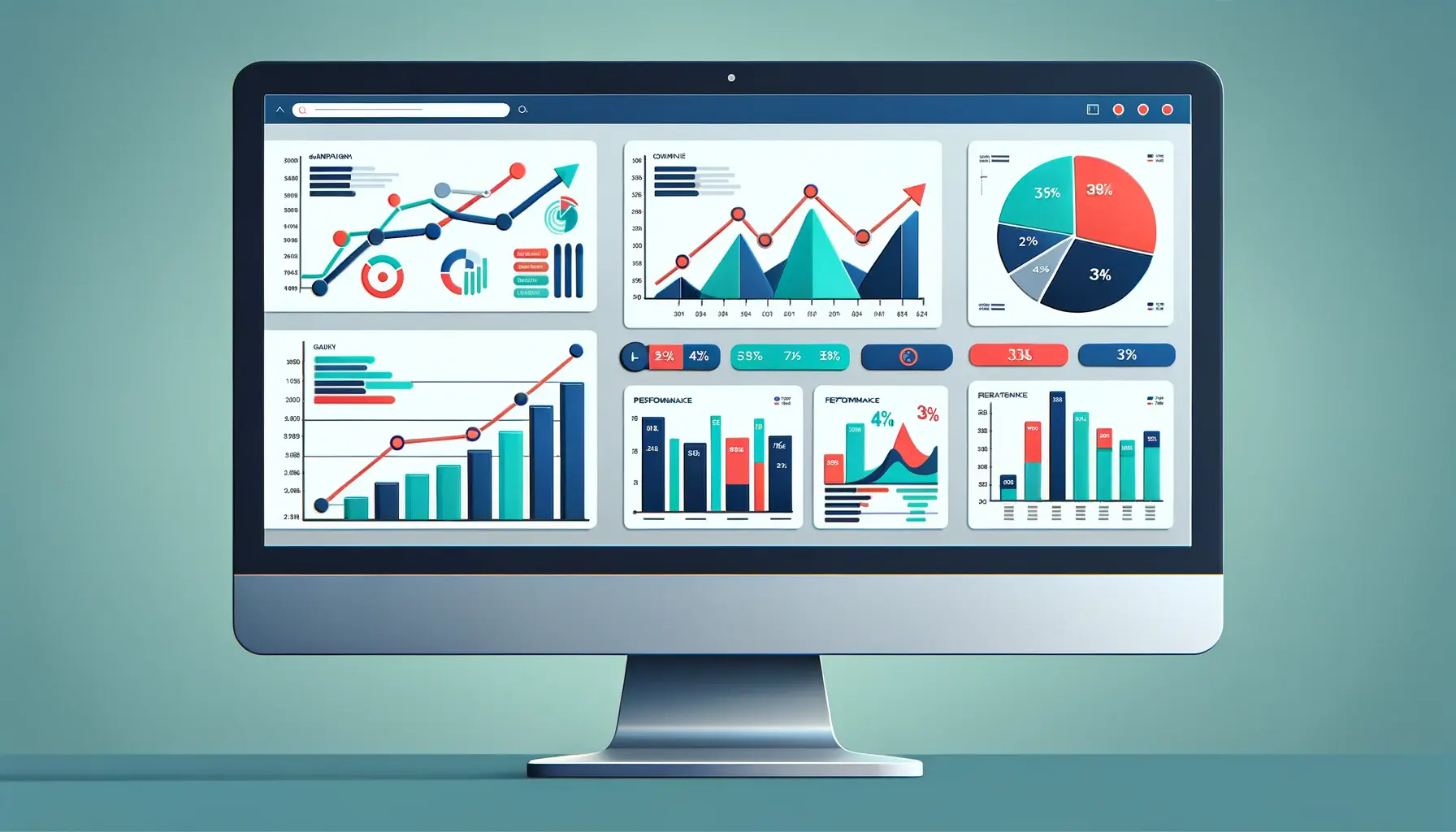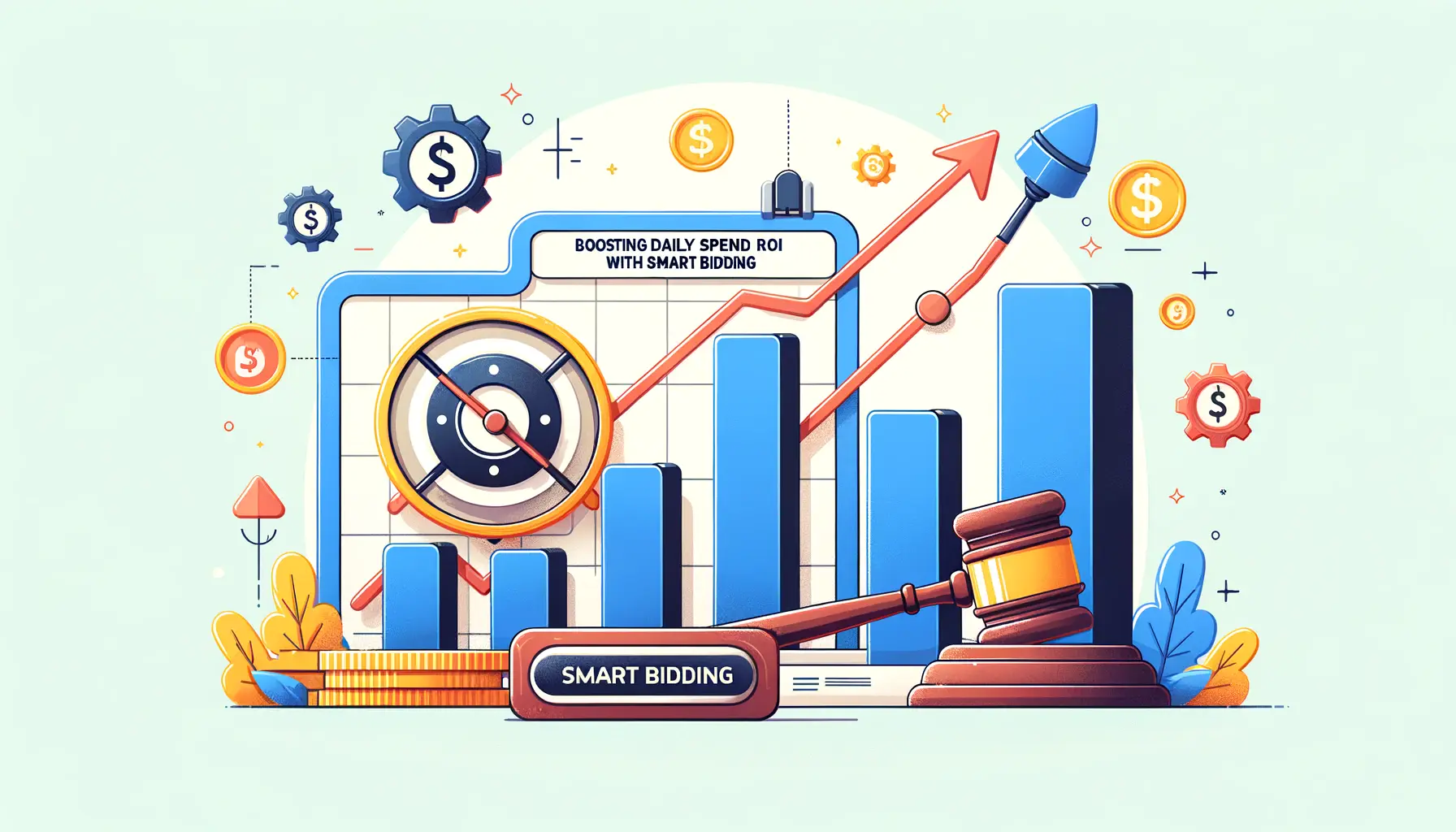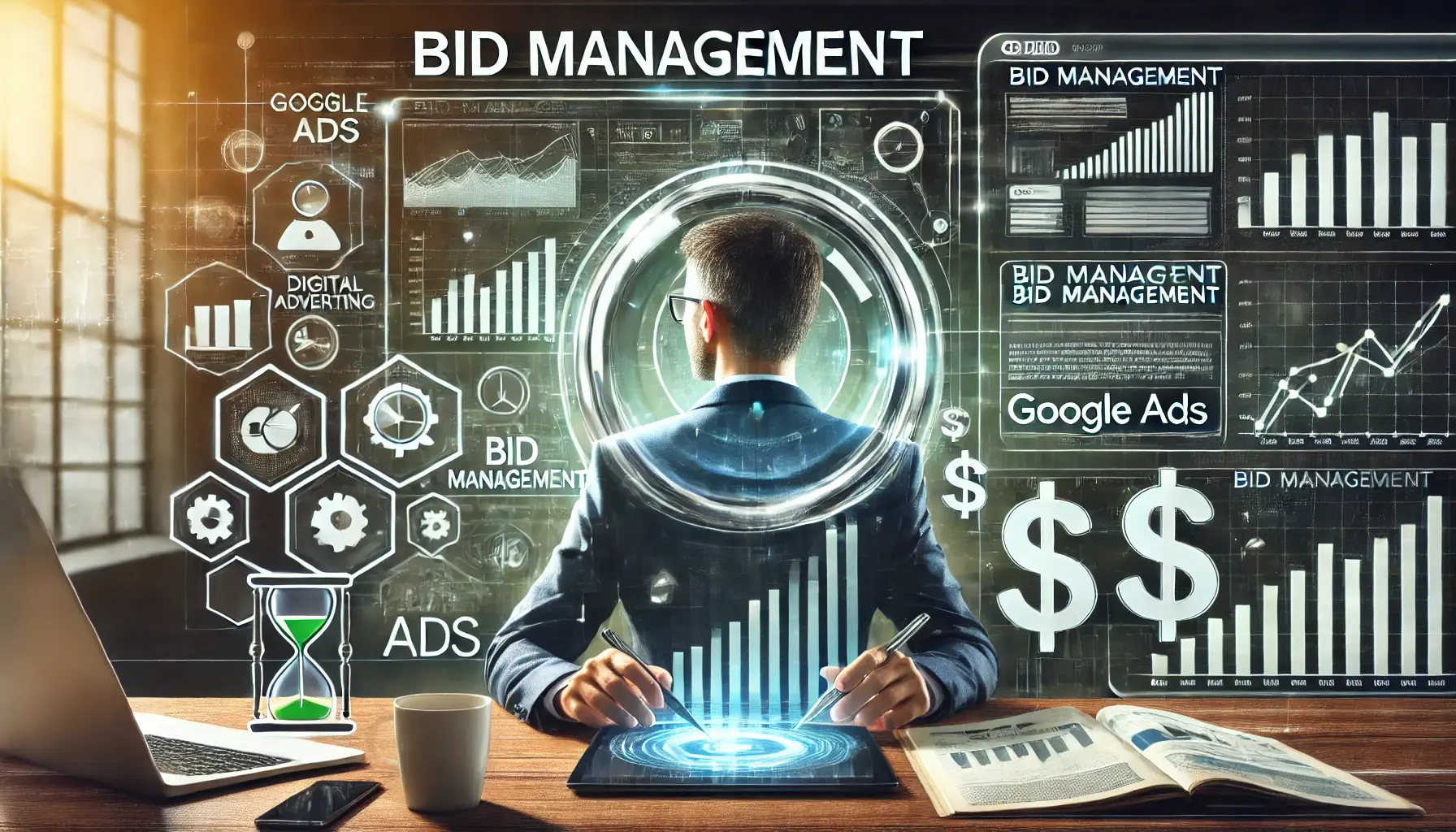In the current rapid digital marketing environment, LinkedIn is a vital platform for B2B marketers.
To tap into its full potential, you need knowledge and the right strategic bidding strategies.
This article discusses the various bidding options available on LinkedIn and provides insights to help you optimize your campaigns and achieve your marketing objectives.
- Understanding LinkedIn’s Bidding Options
- Choosing the Right Optimization Goal for Your Campaign
- Executing Effective Manual Bidding Tactics
- Leveraging Automated Bidding Strategies for Brand Awareness
- Applying Cost Cap Bidding to Low-Cost Campaigns
- Mastering LinkedIn Strategic Bidding for Optimum Success
- Frequently Asked Questions about LinkedIn Strategic Bidding
Understanding LinkedIn’s Bidding Options
LinkedIn provides advertisers with several strategic bidding strategies, each designed to suit specific campaign goals and budget constraints.
Selecting the most appropriate strategy is essential to achieve maximum ROIReturn on Investment, a measure of the profitability of an investment. and reach the desired audience efficiently.
Manual Bidding: Complete Control of Costs
Manual bidding provides full control over your bid for specific actions, such as clicks or impressionsThe number of times an ad is displayed to users..
By managing bid amounts, you have explicit control over how your spending is handled, enabling highly effective cost control.
- Advantages: Allows for precise management of costs, with flexibility for adjustments based on campaign performance.
- Considerations: Requires constant monitoring to maintain bid competitiveness and alignment with campaign goals.
Maximum Delivery: Automated Budget Spending
Maximum Delivery is LinkedIn’s automated bidding tool, designed to fully utilize your daily budget by optimizing bids to achieve the maximum number of results possible within your budget constraints.
- Advantages: Simplifies the bidding process by leveraging LinkedIn’s algorithms to manage bids, reducing the need for constant manual adjustments.
- Considerations: May lead to higher costs per action if not closely monitored, as the goal is maximizing delivery rather than cost efficiency.
Cost Cap: Balancing Automation with Cost Limits
The Cost CapA bidding strategy that allows advertisers to set a maximum spend per target action. strategy allows marketers to set a maximum spend per target action, combining automation with cost control.
LinkedIn’s system will optimize bids to achieve as many results as possible without exceeding the specified budget.
- Advantages: Strikes a balance between automated bidding and cost management, preventing unnecessary overspending.
- Considerations: Setting the cost cap too aggressively can restrict ad delivery, potentially reducing overall campaign performance.
Enhanced Bidding: Adjusting for High-Value Clicks
Enhanced Bidding automatically increases your manual bid by up to 45% for clicks that are more likely to result in high-value outcomes, such as conversionsDesired actions taken by users, such as purchases or sign-ups..
This method aims to boost return on investment by focusing on quality interactions.
- Advantages: Maximizes the potential for conversions by prioritizing high-value clicks without requiring ongoing manual bid adjustments.
- Considerations: The automatic bid increase can lead to higher costs, requiring careful budget management.
By understanding and strategically implementing these strategic bidding options, you can tailor your LinkedIn advertising campaigns to align with your marketing objectives, budget, and desired outcomes.
This will enhance the effectiveness of your overall digital marketing strategy.
Choosing the right bidding option is crucial to maximizing ROI and ensuring your budget is used efficiently.
Choosing the Right Optimization Goal for Your Campaign
In LinkedIn advertising, choosing the proper strategic bidding optimization goal is essential to the success of your campaign.
Your optimization goal determines which user actions LinkedIn’s algorithms prioritize, making your ads more effective in achieving your marketing strategy.
Let’s explore the different optimization goals and understand how they align with various campaign strategies.
Clicks/Landing Page Clicks: Driving Website Traffic
If your primary objective is generating website traffic, optimizing for clicks or landing page clicks is recommended.
This strategy encourages users to engage with your content and learn more about your products or services.
- Advantages: Increases website traffic, creating opportunities for conversions and additional user engagement.
- Considerations: Ensure your landing page is optimized for user experience to make the most of the additional traffic.
Impressions: Optimizing Ad Visibility
Impression optimization focuses on maximizing the number of times your ad is shown, making it ideal for branding campaigns.
- Advantages: Expands brand visibility across a broad audience, strengthening brand recognition.
- Considerations: While reach is extensive, engagement may be lower; therefore, compelling ad creatives are essential.
Video Views: Engaging Through Video Content
For video content campaigns, optimizing for video views ensures that your videos reach users who are most likely to watch and engage.
- Advantages: Encourages user interaction through dynamic content, effectively presenting your message.
- Considerations: Videos should be concise and engaging to hold viewers’ attention.
Engagement Clicks: Encouraging User Interaction
Optimizing for engagementInteractions with content, such as likes, comments, and shares. clicks is designed to increase interactions such as likes, shares, and comments, thereby boosting your content’s organic reach.
- Advantages: Builds a community around your brand and expands content reach through user engagement.
- Considerations: Content must be interesting and relevant to drive meaningful interactions.
Leads: Finding Prospective Customers
Optimizing for leads focuses on collecting user information for future marketing efforts, making it a valuable strategy for businesses looking to generate prospects.
- Advantages: Captures valuable contact details, enabling targeted marketing campaigns.
- Considerations: Lead forms should be simple and require only necessary information to increase completion rates.
Website Conversions: Triggering Specific Behaviors
Website conversion optimization targets users who are likely to take specific actions on your site, such as making a purchase or subscribing to a newsletter.
- Advantages: Directly aligns with business goals by encouraging desired user actions.
- Considerations: Conversion tracking must be properly set up to measure success accurately.
By aligning your strategic bidding optimization goal with your campaign’s objectives, you allow LinkedIn’s algorithms to work in harmony with your marketing strategy, ensuring the highest level of effectiveness for your ad campaigns.
Aligning your optimization goal with campaign objectives ensures that LinkedIn’s algorithms work in your favor, improving ad effectiveness.
Executing Effective Manual Bidding Tactics
Manual bidding on LinkedIn ads provides you with complete control over your bid prices and the flexibility to make budget adjustments.
Implementing strategic bidding tactics can significantly impact the success of your campaign.
Let’s explore how you can tailor your manual bidding strategy for optimal results.
Beginning Below Recommended Bid Ranges
Starting your bids slightly lower than LinkedIn’s recommended range is a smart approach.
Bidding conservatively allows you to assess your audience’s cost tolerance and response rates without overspending.
By beginning with a lower bid, you can evaluate the competitiveness of your bidding and adjust as needed.
- Advantages: Keeps initial costs low while providing insights into the bidding landscape.
- Considerations: May result in limited ad exposure in the short term; monitor performance closely to align with campaign objectives.
Managing and Tuning Bids on a Regular Basis
Consistent monitoring is essential in strategic bidding.
Keeping track of your campaign performance metrics allows you to make necessary bid adjustments, ensuring competitiveness and improved outcomes.
- Benefits: Offers enhanced control over ad spend and performance optimization.
- Considerations: Requires dedicated time and resources for continuous monitoring and refinement.
Preventing Overspending with Controlled Bidding
Manual bidding provides the flexibility to set precise bid values, preventing unexpected overspending.
By defining a budget ceiling per desired action, you maintain control over your expenditures, ensuring that your spending aligns with your marketing strategy.
- Benefits: Establishes clear budget limits and prevents overspending.
- Considerations: Setting bids too low may restrict ad delivery; finding the right balance is crucial.
Understanding the Impact of Audience Size on Bids
The size of your target audience plays a key role in determining your bidding approach.
Smaller, highly targeted audiences often require higher bids to achieve the desired visibility, while larger audiences may allow for lower bids.
Recognizing this dynamic helps in setting appropriate bid levels.
- Benefits: Optimizes bidding strategy based on audience characteristics, enhancing cost efficiency.
- Considerations: Requires thorough audience analysis to determine the most effective bid structure.
By applying these strategic bidding tactics, you gain greater control over your LinkedIn ad campaigns, aligning your bids with marketing objectives and budget constraints.
This approach ultimately enhances the efficiency and success of your campaign.
Starting with lower bids and gradually optimizing based on performance can help reduce costs while maintaining competitiveness.
Leveraging Automated Bidding Strategies for Brand Awareness
When it comes to LinkedIn advertising, strategic bidding through automated bidding strategies like Maximum Delivery plays a crucial role in maximizing brand awareness.
These strategies utilize LinkedIn’s algorithms to optimize ad delivery, ensuring your campaigns effectively reach a large audience.
Understanding Maximum Delivery Bidding
Maximum Delivery is LinkedIn’s automated bidding tool designed to generate the highest number of impressions for your ads within your allocated budget.
By optimizing the bidding process, LinkedIn aims to place your ads in front of the maximum number of users, increasing brand exposure.
Maximum Delivery is particularly suited for brand awareness campaigns, as it simplifies bid management while leveraging LinkedIn’s machine learning technology to enhance ad delivery.
- Benefits: Streamlines the bidding process through automatic bid adjustments, ensuring the best reach within the set budget.
- Considerations: This approach maximizes reach but may lead to a higher cost per impression. Tracking performance metrics is essential to ensure alignment with campaign goals.
Deploying Automated Bidding for Brand Awareness
To leverage automated bidding for brand awareness campaigns effectively, follow these key steps:
- Define Specific Goals: Establish clear objectives for your brand awareness campaign, such as increasing reach or boosting ad impressions. Well-defined goals guide the automated bidding process and provide measurable success indicators.
- Set the Right Budget: Allocate a budget that aligns with your brand awareness objectives. Automated bidding operates within this budget to optimize reach, so ensure it is set at a level that supports your desired outcomes.
- Monitor and Adjust: Regularly review campaign performance metrics, including impressions and reach. While automated bidding handles bid management, ongoing monitoring allows for strategic adjustments to maximize performance.
By following these steps, you can effectively use strategic bidding and automated bidding strategies to enhance brand awareness on LinkedIn, ensuring your ads reach a broad and relevant audience.
Automated bidding simplifies bid management and expands reach, making it an excellent choice for brand awareness campaigns.
Applying Cost Cap Bidding to Low-Cost Campaigns
With LinkedIn ads, applying strategic bidding strategies like Cost Cap Bidding allows advertisers to control costs while leveraging automation.
This tactic is ideal for campaigns that require tightly controlled budgets, ensuring expenditures remain aligned with budget goals while maximizing ad delivery.
What is Cost Cap Bidding?
Cost Cap Bidding enables advertisers to set a maximum average cost per desired action, such as clicks or conversions.
LinkedIn’s algorithmA set of rules and calculations used by LinkedIn to optimize ad delivery. then strives to deliver results at or below the specified cost, providing a safeguard against overspending.
This strategy serves as a middle ground between manual and fully automated bidding, offering some control over spending while still benefiting from LinkedIn’s optimization capabilities.
- Advantages: Maintaining control over average costs makes it easier to stay within budget constraints.
- Points to Consider: Setting the cost cap too low may limit ad delivery, as the algorithm may struggle to find opportunities within the specified cost range.
Efficient Use of Cost Cap Bidding
To use Cost Cap Bidding effectively in your LinkedIn ads, follow these steps:
- Analyze Past Performance: Review past campaign metrics to determine an effective cost ceiling that aligns with your performance targets and market conditions.
- Establish a Reasonable Cost Ceiling: Use historical data and industry benchmarks to set a realistic cost ceiling that does not disrupt ad delivery.
- Monitor Campaign Performance: Track key metrics such as cost per result and delivery volume to ensure the campaign remains within optimal parameters.
- Make Adjustments as Necessary: Be prepared to modify your cost cap or other campaign settings based on performance trends to maintain effectiveness.
By implementing these strategic bidding techniques, you can efficiently manage your LinkedIn advertising budget, ensuring cost-effectiveness while achieving your marketing objectives.
Setting the cost cap too low may severely limit ad delivery, so balance is key.
Mastering LinkedIn Strategic Bidding for Optimum Success
Advertising on LinkedIn offers businesses vast opportunities to connect with professionals and decision-makers.
However, to maximize outcomes, it is essential to understand and implement strategic bidding tactics.
Throughout this article, we have explored several bidding strategies that help advertisers maintain cost efficiency while enhancing performance, ensuring campaigns align with business objectives.
The Strength of Selecting the Proper Bidding Strategy
Each bidding strategy on LinkedIn serves a distinct function, and selecting the right one is critical for a successful campaign.
Whether your goal is brand awareness, lead generation, or website conversions, choosing between manual, automated, or cost-cap bidding can be the difference between success and failure.
- Manual Bidding: Provides full control over bids and cost adjustments but requires continuous monitoring.
- Maximum Delivery Bidding: Ensures maximum ad visibility and automates bidding, though it may lead to higher cost-per-impression spending.
- Cost Cap Bidding: Balances automation with cost controls, ensuring spending aligns with predefined budget limits.
Key Takeaways about LinkedIn Bidding Optimization
To maximize the effectiveness of LinkedIn ads, it is crucial to establish best practices that allow your ads to reach the right audience without exhausting your budget.
Consider these strategic bidding recommendations:
- Establish Specific Goals: Define clear objectives to ensure your bidding strategy effectively supports your campaign’s purpose.
- Regularly Check and Review: Continuously analyze key performance indicators to refine bidding strategies and improve results.
- Test Various Strategies: Experiment with different bidding models to determine which delivers the best ROI for your target audience.
- Leverage LinkedIn’s Algorithm: Utilize automated bidding where appropriate to maximize efficiency while maintaining strict cost control.
Final Thoughts: Achieving Long-Term Success through Strategic Bidding
Mastering strategic bidding on LinkedIn is an ongoing process that involves experimentation, optimization, and adaptation to platform updates and market trends.
Advertisers who dedicate time to refining their bidding strategies will gain a competitive advantage, achieving better ad placement, cost savings, and overall campaign success.
By applying the insights and techniques outlined in this article, you can refine your LinkedIn ad strategy, ensuring your ads reach the right audience at the optimal cost.
Whether your goal is to increase brand visibility, engagement, or conversions, a well-executed strategic bidding strategy will enable you to maximize your advertising budget and achieve sustainable business growth.
Regularly reviewing and testing different bidding strategies can lead to better campaign performance and cost efficiency.
Enjoyed the article? Let its author handle your social media ads. Visit our service page to get started!
Frequently Asked Questions about LinkedIn Strategic Bidding
It is essential to understand LinkedIn’s strategic bidding capabilities to optimize your ad campaigns.
Below are frequently asked questions and concise answers to guide your bidding strategy.
Manual bidding allows advertisers to set explicit bids for target actions, such as clicks or impressions, providing precise control over ad spend.
Maximum delivery is an automated strategic bidding strategy used to spend your daily budget fully by serving as many ads as possible, thereby increasing reach.
Cost cap bidding enables advertisers to set a maximum average cost per desired action, balancing cost control and automation to achieve the best results within budget.
Manual bidding is optimal when you require close control over bids and are prepared to monitor and adjust them regularly to remain competitive.
Automated bidding simplifies bid management by leveraging LinkedIn’s algorithms to optimize ad delivery, reducing the need for constant manual adjustments.
Select a bidding strategy that aligns with your campaign objectives, budget, and comfort level in actively managing bids or relying on automation.
Yes, LinkedIn allows flexibility to adjust your strategic bidding strategy during a campaign, enabling performance optimization as needed.
Higher bidding can improve ad placement by making your ads more competitive in the auctionThe process where LinkedIn determines which ads to display based on bid, relevance, and engagement., leading to greater visibility among your target audience.
The LinkedIn ads auction determines which ads are displayed to users based on bid amount, ad relevance, and projected engagement to ensure the best user experience.













